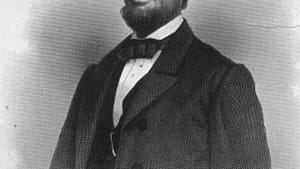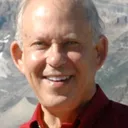Stay in the Loop
BSR publishes on a weekly schedule, with an email newsletter every Wednesday and Thursday morning. There’s no paywall, and subscribing is always free.
An ear-opening musical evocation of a Civil War massacre
Listening to Lincoln: Dave Burrell's Civil War Concerts

Museum concerts are not uncommon these days, but Philadelphia's Rosenbach Museum, a premier smaller collection that houses historical manuscripts of great value, is very choosy about its performances. In this case, the museum not only hosts the concerts but also commissions the compositions and provides the inspiration for them.
Four years ago, they contacted Dave Burrell, a legendary pianist of the avant garde jazz movement who now resides in Philadelphia and is an avid student of American history, and showed him some manuscripts from the Civil War. Impressed with them, Burrell — accompanied by his wife, the poet Monika Larsson — began writing music inspired by both the manuscripts and Larsson’s poems about the events that surrounded them. This has led to a series of yearly concerts collectively entitled Four Scores on 150 Years Ago: Dave Burrell’s Civil War Concerts, with parts of the musical scores now on display at the Rosenbach.
In the spring of 2013, Burrell and Larsson spent time with the Rosenbach staff, continuing to research and discuss the Civil War collections. Both were especially inspired by the manuscript of Lincoln’s Address at Baltimore, given on April 18, 1864, in which he denounced the Confederate massacre of (mostly African-American) Union troops at Fort Pillow. Focusing on Lincoln’s speech and its context to create the emotional epicenter of the work, Larsson and Burrell spent the summer at their second home in her native Sweden respectively writing the poems that became the libretto and setting the poems to music. Burrell composed four movements for piano and soprano, enlisting the superb diva Veronica Chapman-Smith for its performance with himself at the piano.
The first and title movement is entitled “Listening to Lincoln.” It is followed by “One Nation,” a concatenation of Yankee and Confederate motifs. Finally, there are two movements entitled “Requiem for the Fallen at Fort Pillow.” The piece builds from a musical reflection on the Civil War conflict to an intense evocation of war and the horror of man’s inhumanity to man to grief for the victims of Fort Pillow, which then evolves into mourning for all victims and indeed for the human condition itself. A reflection on Lincoln’s profound speech, which casts shame on slavery as a social and economic institution, is followed by a contrapuntal dialogue between the songs “Yankee Doodle” and “Dixie.” Soprano Chapman-Smith then enters with a dirgelike cantata that gradually becomes incalculable grief for the fallen. Improvisations by both piano and voice blend seamlessly with the carefully composed parts. (Burrell hopes to develop the piece into a full-length, partly improvised operatic work.)
Uniting diverse musical genres
The composition and its performance contain elements of classical, jazz, and folk idioms which are seamlessly interwoven so that the music transcends genre. While so-called “crossover” music combining classical motifs, forms, and performers with those of jazz is in vogue today, the genres are often juxtaposed in a postmodern pastiche. By contrast, Burrell’s composition forms an integral whole where the diverse influences are inseparable.
Such high art integration of genres has its precedents. Burrell’s use of “street” and folk motifs is reminiscent of Gustav Mahler’s symphonies, in particular where the latter’s haunting memory of an organ-grinder’s sound (a memory which he incidentally shared with Freud in a consultation conducted in a walk around Vienna) led him sometimes to combine “vulgar” street music with romantic era orchestral scoring. Burrell’s use of polyphony and disparate, jarring tone colors is not unlike Charles Ives’s superimposition of street band sounds and “noises” in the “'St. Gaudens' in Boston Common” movement of Three Places in New England. From the jazz legacy, Burrell, in his unique way, employs pianist Cecil Taylor’s intense, repetitive clusters of notes with varying tonal centers. Chapman-Smith’s singing, while rooted in the lieder and plainsong traditions (think of Ned Rorem and Samuel Barber in connection with the latter), is infused with gospel music and perhaps even a touch of John Coltrane’s preacherlike “sheets of sound.”
Powerful and original piano technique
A significant part of what gives the performance its power and depth is Burrell's piano technique, which is a combination of composed form and improvised detail that provides a woven fabric of sound. Over the course of his long career, Burrell evolved a technical facility that allows him to combine notes in super-rapid prestidigitation that would be difficult for even a virtuoso pianist to emulate.
According to Burrell (in correspondence with me), "My piano technique started to improve when I became obsessed with playing John Coltrane and Monk. I practiced from Nicolas Slonimsky's Thesaurus of Scales and Melodic Patterns every day. I sounded atonal with an emphasis on fourths instead of thirds. I had a teacher at Berklee College of Music who suggested that I play all my finger drills backwards. It was also suggested that I go back over Bach Fugues and Inventions as well as Chopin Etudes. Finally Sam Charters, the jazz historian. said I should play Jelly Roll Morton. That's when I gained greater control over my instrument."
Such an unusual combination of jazz and classical piano drills, relentlessly pursued over several decades, allowed Burrell to acquire unique movements of the wrists and fingers that allow for more rapid and complex expressions than the usual, more rigid hand and finger kinetics. For example, Burrell sometimes swirls his hand with “Raggedy Ann” limpness to sweep a series of keys in a single stroke. The effect is electric.
War and persecution remembered and mourned
In this concert, Burrell combined his remarkable technical facility with an intuitive sense of musical expression to generate emotional power that conveyed social and historical conflicts, the nightmare of war, and inconsolable grief to an extent rarely achieved in the musical canon. The work could be compared in complexity and passion perhaps with Beethoven's late string quartets or Britten's War Requiem, but it really stands on its own by virtue of Burrell's unique "autograph" and "vocabulary.” The overall structure and effect embodies Aristotle’s ideas about rhetoric and tragedy: a heartfelt and noble statement about pride and downfall, and an elegy to the victims of senseless persecution and cruelty, from slavery to the Holocaust to Sandy Hook.
From the “salon” to the world
The feeling at this concert was akin to attending a musical salon in Paris and hearing a breakthrough work performed for a small elite audience: The room was small but filled with eager listeners. That is how great work often begins in the arts and sciences. (Logical “next steps” for this composition would be the Curtis Institute, the Kimmel Center, and the Smithsonian.) It takes time for the world to catch on, and it is likely that in due time, the world will hear more from Dave Burrell. Already a jazz legend, now he is beginning to make his imprint on the whole of music.
What, When, Where
"Listening to Lincoln": Dave Burrell's Civil War Concerts. World Premiere Performance April 10, 2014; repeat performance April 12.
Exhibition of Burrell's working materials and the original Civil War documents through May 25, 2014.
Rosenbach Museum and Library, 2008-2010 Delancey Place, Philadelphia. 215-732-1600 or www.rosenbach.org.
Sign up for our newsletter
All of the week's new articles, all in one place. Sign up for the free weekly BSR newsletters, and don't miss a conversation.
 Victor L. Schermer
Victor L. Schermer